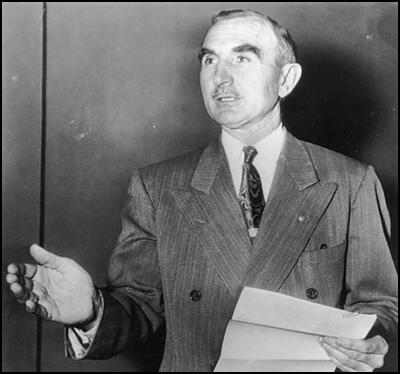On this day on 22nd July
On this day in 1882 Edward Hopper, the son of an owner of a dry-goods store, was born in Nyack. He registered with the Correspondence School of Illustrating in 1899. He studied under Robert Henri and William Merritt Chase at the New York School of Art from 1900 to 1906. A fellow student was George Bellows.
In 1913 the ideas of Henri inspired the International Exhibition of Modern Art (the Armory Show) held in New York City. Some of Hopper's work was included in the exhibition held at the 69th Regiment Armory. It included over 1,300 works, including 430 from Europe. The exhibition, held between 17th February and 15th March, received around 250,000 visitors.
Stephen Coppel, the author of The American Scene (2008) has pointed out: "Between 1915 and 1923 Hopper made nearly seventy etchings and drypoints. His early etchings were executed directly on to the copper plate; preparatory sketches exist for his later prints. His etchings went through many changes of state as minor adjustments were made to the plate. With one exception, he printed all his own plates, using an old money-printing press."
Hopper established a studio at Washington Square North in Greenwich Village, where he remained for the next fifty-four years. Until 1924 he worked as a freelance commercial artist, a role he detested. An exhibition of his watercolours at the Frank K. M. Rehn was so successful he could now concentrate on being a fine artist.
Hopper's distinctive style emerged soon after becoming a full-time painter and changed very little throughout his career. The central theme of his work was the loneliness of city life. His paintings are usually set in places such as motel rooms, filling stations, cafeterias, bars and offices. Hopper's work soon gained recognition and in 1933 the Museum of Modern Art gave him a retrospective exhibition.
Edward Hopper died on 15th May, 1967.
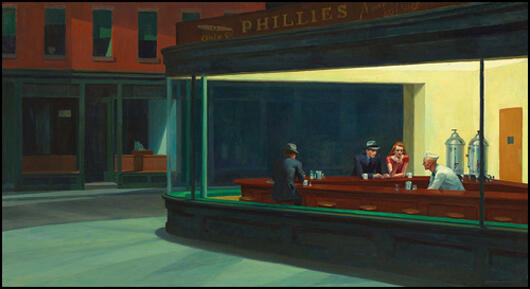
On this day in 1902 the The East Grinstead Observer reported on the marriage of Countess Muriel De La Warr. "Muriel Agnes Countess De La Warr of the Manor House, Bexhill, was granted a degree nissi in the Divorce Court on Friday on the grounds of misconduct and desertion of her husband, Gilbert De La Warr with Miss Turner, an actress. Miss Turner stated she met Lord De La Warr in December 1900 when she was acting in Bexhill. The same month she returned to London and took a room at the Savoy. Lord De La Warr stayed at the hotel with her, and subsequently visited her at her rooms in Tavistock Chambers."
Muriel Brassey married Gilbert Sackville, 8th Earl De La Warr (1869-1915) on 4th August 1891. Muriel gave birth to three children: Idina (1893), Avice (1897) and Herbrand (1900).
According to The East Grinstead Observer: "Lord De La Warr left England for South Africa in October, 1899, returning in the following July. Since his return the relations between him and his wife had entirely changed owing to the conduct of the husband, and the family circle became very unhappy. In June 1901, the Earl withdrew from the family home and has never been back since." The marriage was dissolved in 1902 on the grounds of Gilbert's adultery with an actress.
Muriel, Countess De La Warr, was an active supporter of the Liberal Party but joined the Labour Party during the struggle for women's suffrage. The Countess De La Warr and her daughter Idina Sackville were both founder members of the East Grinstead Suffrage Union. So also was the Countess De La Warr's younger sister, Helen Brassey.
Muriel was originally a supporter of the Women's Social and Political Union. However, she broke with the WSPU during its arson campaign. In April 1912, the National Union of Women's Suffrage Societies announced that it intended to support Labour Party candidates in parliamentary by-elections. The NUWSS established an Election Fighting Fund (EFF) to support these Labour candidates. The EFF Committee, which administered the fund, included Muriel de la Warr, Margaret Ashton, Henry N. Brailsford, Kathleen Courtney, Millicent Fawcett, Catherine Marshall, Isabella Ford, Laurence Housman, Margory Lees and Ethel Annakin Snowden.
In 1913 Muriel de la Warr became president of of the East Grinstead Women's Suffrage Society. The following year she joined the United Suffragists. During this period she lived with Mary Dodge, the heiress to the automobile millions. They were also both members of The Theosophical Society.
A close friend, George Lansbury, later claimed that De La Warr played a very important role in the feminist and socialist movement but it was "little known, because she always insisted on being kept in the background". Lansbury pointed out that her money helped to support many campaigns such as the fights for women's suffrage, trade union rights and self-determination for India. Lansbury argues that without De La Warr's financial contributions the Daily Herald would have been forced to close.
Muriel's son, Herbrand Sackville, 9th Earl De La Warr (1900-1976) was the first hereditary peer to take his seat in the House of Lords as a supporter of the Labour Party. He was later to become one of Britain's youngest ever cabinet ministers.
Muriel Sackville, Countess De La Warr, died on 8th August 1930.
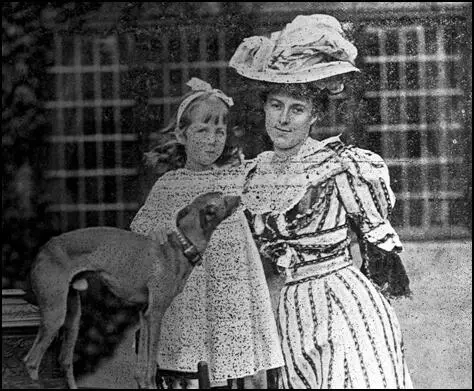
On this day in 1912 the Daily Mirror reports that Mary Leigh, Gladys Evans, Jennie Baines and Mabel Capper, were arrested for setting fire to the Theatre Royal in Dublin. Leigh called no witnesses and addressed the jury from the dock. Votes for Women reported: "The dramatic feature of the day was undoubtedly Mrs Leigh's defence of her case. Slight and frail in outward appearance, spontaneous and alert in manner, she seemed strangely out of place among the burly officials and dull routine of a court of justice. Her masterly cross-examination was so searching as seriously to baffle several witnesses and confuse their evidence on the point of identification, so that the jury found themselves unable to agree that she actually was one of the persons who fired the Theatre Royal. Her speech to the Court was a heroic effort. It was not rhetoric, nor careful arrangements of arguments and telling points, nor even eloquence, that moved the hearts so strongly of all who gazed upon her pleading countenance as she laboured to reiterate the long tale of injustice and evasion meted out to the women who asked for the removal of the disqualification of their sex, and the equally long tale of the steadily successful attainment by men of their political objects in England and Ireland by the sole means of agitation by violence. The pathos of her passionate determination to persevere in her efforts to the emancipation of her womanhood moved the judge himself and many other with deep emotion. Her courage was an amazement even to women who have felt most deeply the things we have at heart." The judge referred to Mary Leigh as "a very remarkable lady of great talents"
Mary Leigh told them that if they sent her to prison she might not survive the sentence. Mary warned that if convicted she would fight: "she would put her back against the wall, and nothing, not even the whole army of the Government and officials, would bring her to submission. The jury returned guilty verdicts on Mary Leigh and Gladys Evans. Both women were sent to prison for five years because "no more terrible catastrophe could occur in a city than a conflagration at a theatre". Jennie Baines was sentenced to seven months with hard labour, and Mabel Capper was acquitted for lack of evidence."
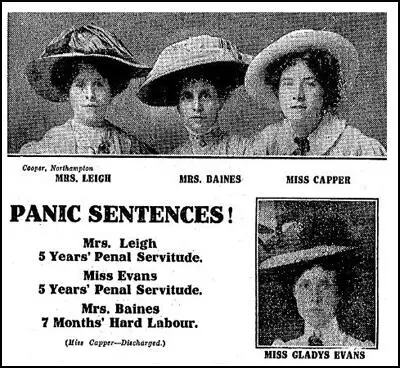
On this day in 1916 in San Francisco, a bomb explodes during a parade in favour of joining the First World War. Critics of the march such as William Jennings Bryan, claimed that the Preparedness March was being organized by financiers and factory owners who would benefit from increased spending on munitions. During the march a bomb went off in Steuart Street killing six people (four more died later). Two witnesses described two dark-skinned men, probably Mexicans, carrying a heavy suitcase near to where the bomb exploded.
The Chamber of Commerce immediately offered a reward of $5,000 for information leading to the arrest and conviction of the dynamiters. Other organizations and individuals added to this sum and the reward soon reached $17,000. Offering such a large reward was condemned by the editor of the New York Times claiming it was a "sweepstake for perjurers".
On the evening of the bombing Martin Swanson went to see the District Attorney, Charles Fickert. Swanson told Fickert that despite the claims that it was the work of Mexicans, he was convinced that Tom Mooney and Warren Billings were responsible for the explosion. The next day Swanson resigned from the Public Utilities Protective Bureau and began working for the District Attorney's office. On 26th July 1916, Fickert ordered the arrest of Mooney, his wife Rena Mooney, Warren Billings, Israel Weinberg and Edward Nolan. Mooney and his wife were on vacation at Montesano at the time. When Mooney read in the San Francisco Examiner that he was wanted by the police he immediately returned to San Francisco and gave himself up. The newspapers incorrectly reported that Mooney had "fled the city" and failed to mention that he had purchased return tickets when he left San Francisco.
None of the witnesses of the bombing identified the defendants in the lineup. The prosecution case was instead based on the testimony of two men, an unemployed waiter, John McDonald and Frank Oxman, a cattleman from Oregon. They claimed that they saw Warren Billings plant the bomb at 1.50 p.m. Oxman saw Mooney and his wife talking with Billings a few minutes later. However, at the trial, a photograph showed that the couple were over a mile from the scene. A clock in the photograph clearly read 1.58 p.m. The heavy traffic at the time meant that it was impossible for Mooney and his wife to have been at the scene of the bombing at 1.50 p.m. Despite this, Mooney was sentenced to death and Billings to life-imprisonment. Rena Mooney and Israel Weinberg were found not guilty and Edward Nolan was never brought to trial.
A large number of people believed that Billings and Mooney had been framed. Those involved in the campaign to get them released included Robert Minor, Fremont Older, George Bernard Shaw, Heywood Broun, Samuel Gompers, Eugene V. Debs, Roger Baldwin, John Dewey, John Haynes Holmes, Oswald Garrison Villard, Norman Hapgood, Crystal Eastman, Norman Thomas, Upton Sinclair, Theodore Dreiser, Sinclair Lewis, Lincoln Steffens, H. L. Mencken, Burton K. Wheeler, Sherwood Anderson, Abraham Muste, Harry Bridges, James Larkin, James Cannon, William Z. Foster, Alexander Berkman, Emma Goldman, John Bright, William Haywood, William A. White, Carl Sandburg, Arturo Giovannitti and Robert Lovett.
Mooney's defence team complained about the method of selecting his jury. Bourke Cockran pointed out that in San Francisco "each Superior Court Judge places in the box from which the trial jurors are drawn the names of such persons as he may think proper. In theory he is supposed to choose persons peculiarly well qualified to decide issues of fact. In actual practice he places in the box the names of men who ask to be selected. The practical result is that a jury panel is a collection of the lame, the halt, the blind, and the incapable, with a few exceptions, and these are well known to the District Attorney who is thus enabled to pick a jury of his own choice." It was also discovered that William MacNevin, the foreman of Mooney's jury, was a close friend of Edward Cunha, who led the prosecution. MacNevin's wife later claimed her husband was in collusion with Cunha during the trial.
The American government also became concerned about the Mooney and Billings Case and the Secretary of Labor, William Bauchop Wilson, delegated John Densmore, the Director of General Employment, to investigate the case. By secretly installing a dictaphone in the private office of the District Attorney he was able to discover that Mooney and Billings had probably been framed by Charles Fickert. The report was leaked to Fremont Older who published it in the San Francisco Call on 23rd November 1917.
There were protests all over the world and President Woodrow Wilson called on William Stephens, the Governor of California, to look again at the case. Two weeks before Mooney was scheduled to hang, Stephens commuted his sentence to life imprisonment in San Quentin. Soon afterwards Mooney wrote to Stephens: "I prefer a glorious death at the hands of my traducers, you included, to a living grave."
In November 1920, Draper Hand of the San Francisco Police Department, went to Mayor James Rolph and admitted that he had helped Charles Fickert and Martin Swanson to frame Mooney. Hand also confessed that he had arranged for John McDonald to get a job when he began threatening to tell the newspapers that he had lied in court about Mooney and Billings. Mooney's defence team now began to search for MacDonald. He was found in January 1921 and agreed to make a full confession. He claimed he did see two men with the large suitcase but was unable to get a good look at them. When he reported the incident to District Attorney Charles Fickert he was asked to say the men were identify Mooney and Warren Billings. Fickert said that if he did this "I will see that you get the biggest slice of the reward." Later two witnesses, Edgar Rigall and Earl K. Hatcher, came forward and provided evidence that Frank Oxman was 200 miles away during the bombing and could not have seen what he told the court at the trial of Mooney.
In February 1921 John McDonald confessed that the police had forced him to lie about the planting of the bomb. Despite this new evidence the Californian authorities refused a retrial. After the publication of this new evidence it was generally believed that Charles Fickert and Martin Swanson had framed Mooney and Billings. However, Republican governors over the next twenty years: William Stephens (1917-1923), Friend Richardson (1923-1927), Clement Young (1927-1931), James Rolph (1931-1934) and Frank Merriam (1934-39) all refused to order the release of the two men.The international campaign to free Mooney and Billings continued.
In a survey carried out in 1935 and it was discovered that Tom Mooney was one of the four best known Americans in Europe (other three were Franklin D. Roosevelt, Charles A. Lindbergh and Henry Ford).
In 1937 a group of politicians led by Caroline O'Day, Nan Honeyman, Jerry O'Connell, Emanuel Celler, James E. Murray, Vito Marcantonio, Gerald Nye and Usher Burdick asked President Franklin D. Roosevelt to intercede in the case. When Roosevelt declined Murray and O'Connell introduced a resolution in the Senate calling on Governor Frank Merriam to pardon Mooney and Billings.
In November 1938 Culbert Olson was elected as Governor of California. He was the first member of the Democratic Party to hold this office for forty-four years. Soon after gaining power Olson ordered that Tom Mooney and Warren Billings should be released from prison. Rena Mooney, who welcomed her husband as he left San Quentin was quoted as saying: "These twenty-two long years have been moth-eaten. Life to me has been something like a cloak. There is little left but the tatters."
A crowd of 25,000 greeted Mooney in San Francisco. Over $20,000 in debt, Mooney planned a lecture tour on the merits of the New Deal, trade union rights and the dangers of fascism in Europe. However, he was a sick man and a month after being released from prison he had an emergency operation to remove his gallbladder. For the next two years he had three more operations and spent most of his time in hospital. Tom Mooney died on 6th March, 1942.
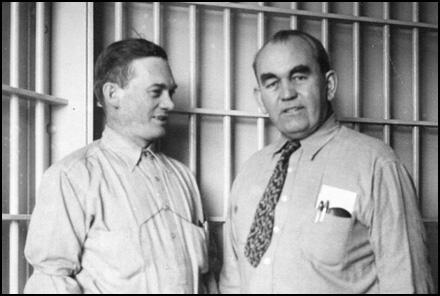
On this day in 1941 General Demitry Pavlov, the Commander of the Soviet Western Front is executed by the NKVD for retreating from Minsk.
Dmitry Pavlov was born in Kostroma Oblast on 23rd October, 1897. At the beginning of the First World War he served in the Russian Army on the Eastern Front.
Pavlov was a Bolshevik and supported the forces that overthrew Tsar Nicholas II. After the Russian Revolution he joined the Red Army and took part in the Russian Civil War.
Pavlov was chosen for officer training and graduated from the Frunze Military Academy in 1928. During the Spanish Civil War he commanded a brigade of Soviet tanks.
In June, 1937, Mikhail Tukhachevsky and seven other top Red Army commanders were charged with conspiracy with Germany. All eight were convicted and executed. All told, 30,000 members of the armed forces lost their lives during the Great Purge. This included fifty per cent of all army officers. Pavlov escaped the purge and on his return to the Soviet Union he was made the Head of the Directorate of Tank and Armoured Car Troops.
In 1940 Pavlov became the commander of the Western Special Military District. On 22nd February 1941, he was one of the first Soviet generals to receive the new rank of General of the Army, inferior only to the rank of Marshal of the Soviet Union. He was placed in charge of Minsk.
On 21st June, 1941, a German sergeant deserted to the Soviet forces. He informed them that the German Army would attack at dawn the following morning. Joseph Stalin was reluctant to believe the soldier's story and it was not until the German attack took place, Operation Barbarossa, that he finally accepted that his attempts to avoid war with Germany had failed.
The German forces, made up of three million men and 3,400 tanks, advanced in three groups. Andrey Yeryomenko, who was in Minsk, later wrote: "Having covered every inch of ground with corpses the Nazis broke through to Smolensk. Stubborn fighting for the town proper raged for almost a whole month. The city repeatedly passed from hand to hand. More than one German division found its last resting place in the approaches to Smolensk and in the town itself. Every street and every house was contested by severe fighting and the Nazis paid very heavily for every yard of their advance. Hundreds of German soldiers and officers perished in the waters of the Dnieper River." General Pavlov was forced to retreat and the within six days, the German Army had captured the city. When he heard the news Stalin told Lavrenty Beria: "This is a monstrous crime. Those responsible must lose their heads."
Pavlov and his chief of staff, Major-General Vladimir Efimovich Klimovskikh, were now recalled to Moscow. After a meeting with Kliment Voroshilov they were charged on 4th July with being involved in an "anti-Soviet military conspiracy" that had "betrayed the interests of the Motherland, violated the oath of office and damaged the combat power of the Red Army that are crimes under Articles 58-1b, 58-11 RSFSR Criminal Code." It was reported that: "A preliminary judicial investigation and determined that the defendants Pavlov and Klimovskikh being: the first - the commander of the Western Front, and the second - the chief of staff of the same front, during the outbreak of hostilities with the German forces against the Union of Soviet Socialist Republics, showed cowardice, failure of power, mismanagement, allowed the collapse of command and control, surrender of weapons to the enemy without fighting, willful abandonment of military positions by the Red Army, the most disorganized defense of the country and enabled the enemy to break through the front of the Red Army."
When Joseph Stalin was told that Pavlov and Klimovskikh had been charged he told Major-General Alexander Poskrebyshev: "I approve the sentence but tell Ulrikh to get rid of all that rubbish about conspiratorial activity. The case shouldn't drag out. No appeal. And then inform the fronts so that they know that defeatists will be punished without mercy." Anastas Mikoyan later wrote: "It was a pity to lose him but it was justified."
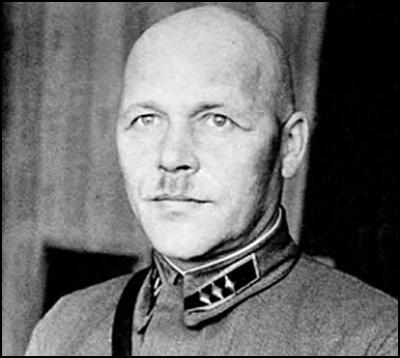
On this day in 1974 Wayne Morse died in Portland, Oregon,
Wayne Morse was born in Madison, Wisconsin, on 20th October, 1900. After graduating from the University of Wisconsin in 1923 he studied law at the University of Minnesota and Columbia University. As a young man he came under the influence of Robert La Follette, a Republican from Wisconsin.
Morse became assistant professor of law at the University of Oregon in 1929. Over the next few years he gained national recognition as an arbitrator of industrial disputes and served as a member of the National War Labor Board (1942-44).
A member of the Republican Party, Morse was elected to the Senate in 1944. On the left of the party, Morse's liberal views made him a target of Joseph McCarthy. However, Morse was extremely popular in Oregon and he was able to survive McCarthy's claims that he was a Communist sympathizer. Although an anti-Communist, Morse continued to support the civil liberties of members of the Communist Party. He also signed the Declaration of Conscience, a document that attacked the abuses of McCarthyism.
Morse was an advocate of Afro-American civil rights and fought for the desegregation of the District of Columbia and upset senators from the Deep South by inviting black leaders to meetings in the Senate.
In 1952 Morse refused to support the Republican presidential nominee, Dwight Eisenhower and and sat in the Senate as an independent. He also attacked the vice president, Richard Nixon, and the smear tactics he used against his opponents. He eventually joined the Democratic Party and won his seat in the Senate in 1956.
A strong opponent of the Vietnam War, Morse was one of only two senators to vote against the Gulf of Tonkin resolution in 1964. Morse was defeated for re-election in 1968.
